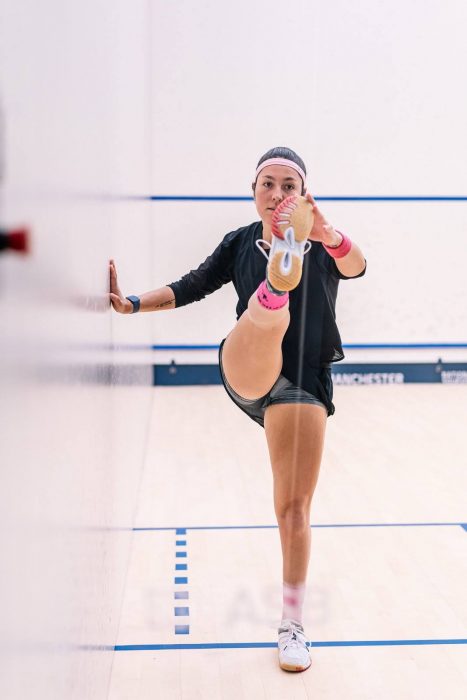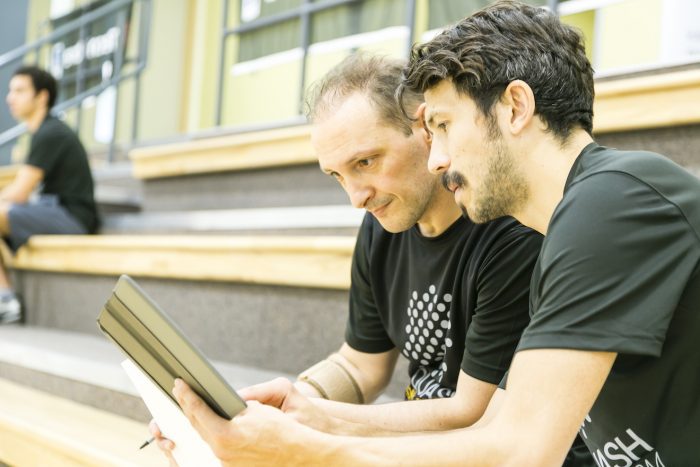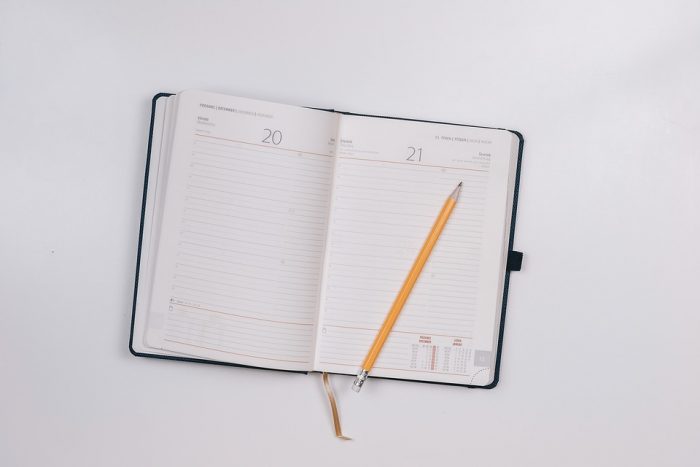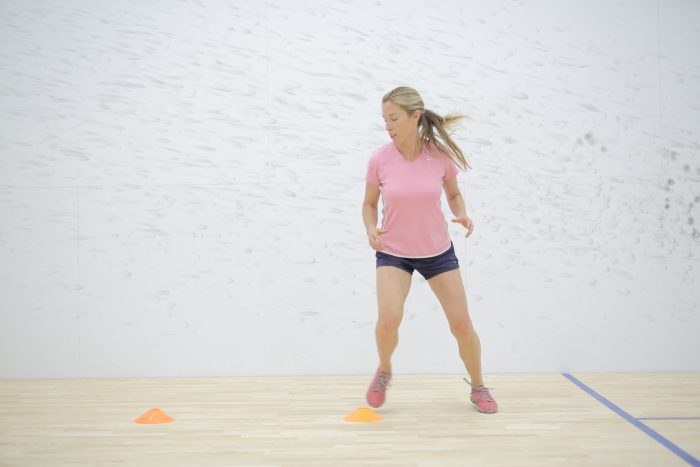Perhaps one of the biggest differences between most amateurs and professionals in respect to their training, is how much more schedule and structure there is surrounding the whole process with the pros. In contrast to the average club player where things are often taken day by day on a fairly ad hoc basis, elite-level professional players typically plot out their training dates and session plans well ahead of time, and in far more detail.
 Achieving the most improvement within the limited training time that they have, is something at the forefront of most amateur players’ minds. While many players pursue their goals through hiring pro coaches to get access to their technical mastery, watching the elites play to pick up strategic tips, and purchasing the equipment they see their favourite stars using, far fewer people actually attempt to follow the professional lead as regards how to best tie things together and properly plan their training.
Achieving the most improvement within the limited training time that they have, is something at the forefront of most amateur players’ minds. While many players pursue their goals through hiring pro coaches to get access to their technical mastery, watching the elites play to pick up strategic tips, and purchasing the equipment they see their favourite stars using, far fewer people actually attempt to follow the professional lead as regards how to best tie things together and properly plan their training.
Want to be more like the pros, and work with a structured, measured, and properly programmed approach? Read on to learn our 5 steps to creating your own elite training plan.
1.Assess your needs
The first thing you need to do when building your training programme is to decide exactly what it is you’re going to be primarily focusing on.
There are lots of different elements of fitness to consider, including endurance, speed, strength, power, mobility etc. Whilst it is possible to follow the approach of a ‘little bit of everything’ when you’re starting out, if you really want to make a significant difference in any particular area then you’re going to eventually need to place additional emphasis upon your weak points.
There are several ways to best assess where your weaknesses lay.
The first and most obvious one is just how you feel:
- if you considerably slow down by the end of a game, then it’s endurance you need to place most focus on
- if you find you’re often not fast enough to the ball at the front of the court, then it’s speed you should prioritise
- if you find your lunge is unstable and you lack balance and control in your shot, then it’s strength you need to emphasise more, and so on.
 Similarly, you could ask a coach or playing partner for their input as regards where you need to focus more work. Often that external view can be very insightful, and pick up things you may have missed.
Similarly, you could ask a coach or playing partner for their input as regards where you need to focus more work. Often that external view can be very insightful, and pick up things you may have missed.
The final, more objective approach, is to put yourself through a battery of fitness tests, to get some specific numbers of where you are on a physical with your endurance/speed/power etc. There’s a comprehensive series of tests on the SquashSkills Training app for this very reason, consisting of a range of great squash-specific fitness assessments including the On-Court Bleep Test, the Vertical Jump Test, and the Ball Transfer Speed Test.
2. Determine your available time
 The next thing to do is to plan out exactly how much training time you have available. It’s best to do this in blocks of 7 days ahead at a time, to allow flexibility for everything else you allocate time for in your week.
The next thing to do is to plan out exactly how much training time you have available. It’s best to do this in blocks of 7 days ahead at a time, to allow flexibility for everything else you allocate time for in your week.
Each weekend take a look in your diary for the coming week and determine how many training slots you have available, and how long each is going to be. Of course, there may be unforeseen circumstances surrounding work/family/social that come up that need to be attended to, but if you plot your training sessions out in advance and treat them as ‘appointments’ in the same way you would for a car servicing, a dentist visit, or a dinner date with your partner, then you’re far more likely to respect and adhere to them.
There are of course going to be certain periods when you’re busier than others, but if you have goals you want to achieve then you need to look at your daily schedule and see where you can make changes to find that training time. Training sessions don’t need to be 60mins+ marathons, you can get plenty done in just half an hour a day if that’s all you have. Training sessions don’t even necessarily need to take place at the squash club or in the gym – we have a whole range of sessions on the SquashSkills Training app that can be done at home or in the garden.
It may mean adjusting your bedtime or getting up time, it may mean making sacrifices with other hobbies, or it may mean just tightening up with your general schedule. Ultimately though, if it’s important to you, then you’ll find a way to squeeze in that necessary extra time in your day to be able to train 3, or 4, or 5 times a week, and get it done.
3. Select and plot your sessions
Once you have established what main areas of your physical conditioning you’re going to focus on, and what available time slots you have, the next step is to plot out the specifics of your sessions.
Whatever you’ve highlighted as your most pressing area of improvement, that’s the first session you need to slot into your week. That way, even if unforeseen circumstances occur and disrupt later plans and you don’t get the chance to do all the workouts you had lined up, you’ll still be at least getting that 1 most personally important session in as a minimum.
If you’re just starting out and working to build just some general conditioning, the amount of sessions you do for each element of fitness (endurance, speed, strength etc) isn’t hugely important. If you’re really aiming to work on something specifically however, then training that element 2 or even 3 times in a week will be necessary to build to higher levels.
 It can be useful to incorporate some of your physical training work into your standard on-court sessions. If you’re doing some drills with a friend, or if you have a friendly match lined up for example, you could set aside some time either before or after the session to do a truncated fitness workout – we call these ‘bolt-on’ sessions, and they’re a great way to be efficient with your time.
It can be useful to incorporate some of your physical training work into your standard on-court sessions. If you’re doing some drills with a friend, or if you have a friendly match lined up for example, you could set aside some time either before or after the session to do a truncated fitness workout – we call these ‘bolt-on’ sessions, and they’re a great way to be efficient with your time.
We have a wide selection of sessions for all of the different aspects of fitness on the SquashSkills Training app, so you can pick between a variety of sessions of different durations, intensities, and whether on-court of off-court, to best construct your own personalised training schedule.
4. Make yourself accountable
So you’ve isolated your areas for improvement, you’ve planned out your week, and you’ve plotted out your sessions. Drive and motivation usually start high in those exciting early stages, but after a couple of weeks of grind, it’s not uncommon for that initial enthusiasm to begin to wane as the workouts stack up and distractions become more tempting.
It’s here where the substance of your central ‘why’, becomes essential.
Before you even embark on your fitness training odyssey, you should take the time to clearly consider what your actual goals are for your training programme and why they’re important to you, rather than just having a vague notion of ‘wanting to get a bit fitter’. Once those goals are clear in your mind, write them down somewhere – scientific research suggests there is a stronger adherence to goals when you’ve taken the time to actually write them down and give them a physical substance, rather than just keeping them in your mind as ethereal thoughts.
Similarly, keeping an ongoing training diary recording your reflections, results, and improvement over time can be a really useful ongoing tool here too.
An excellent way to sustain motivation further is by sharing your training with a good workout partner. They don’t need to be someone you train with each and every session, or even necessarily someone who has particularly similar outcome goals to you, but just someone you can discuss, share and review your training with periodically. Having a good training partner is a great way to ensure you’re both held accountable, and help avoid you drifting away from your focus.
If you play for a team at your club, you could even make it a thing for the whole squad, setting up a chat group or email thread to support and motivate each other through your respective training plans.
5. Review & evaluate your progress
You’ll find that there’s a natural internal assessment of your development over time in respect to how you begin to feel the effects of becoming fitter and stronger, in addition to how your on-court results pan out.
Taking the time to actually gauge your ongoing progress as part of a more solid and objective process can be a really beneficial exercise as well however, and help give you a clearer structure for reviewing and evaluating the success of your training.
 Try setting yourself a formal review every few months, where you sit down with a coach or regular playing partner to discuss your results and improvements, and consider what has worked well and what perhaps hasn’t been quite so successful.
Try setting yourself a formal review every few months, where you sit down with a coach or regular playing partner to discuss your results and improvements, and consider what has worked well and what perhaps hasn’t been quite so successful.
Running through some of the initial fitness tests you did is extremely useful here to assess the work you’ve been doing, as is watching video footage of your games (particularly if you don’t have an external coach/partner to help with your feedback).
New targets and goals can then be established and planned towards, and the cycle repeated.
So that’s your 5-step guide to creating your own effective training programme.
If it all sounds a bit overwhelming and you’re thinking it would be great if there was someone there to help you through the entire process of assessing your strengths and weaknesses, planning your sessions, and plotting your workouts, the good news is, there is!
 The SquashSkills Training Club is your one-stop-shop for effective training programmes supported by world-class coaches prescribing elite training drills, whilst bringing together a tight-knit community of fellow players.
The SquashSkills Training Club is your one-stop-shop for effective training programmes supported by world-class coaches prescribing elite training drills, whilst bringing together a tight-knit community of fellow players.
Wherever you are in the world and whatever facilities you have available, the SquashSkills Training Club is there to help you! Click the link here to check out the programmes we currently have running.
Gary Nisbet
B.Sc.(Hons), CSCS, NSCA-CPT, Dip. FTST
SquashSkills Fitness & Performance Director
JOIN SQUASHSKILLS TRAINING CLUB
Improve your technique and fitness with squash-specific training programmes and get personalised advice from world-class squash coaches!
Find out more